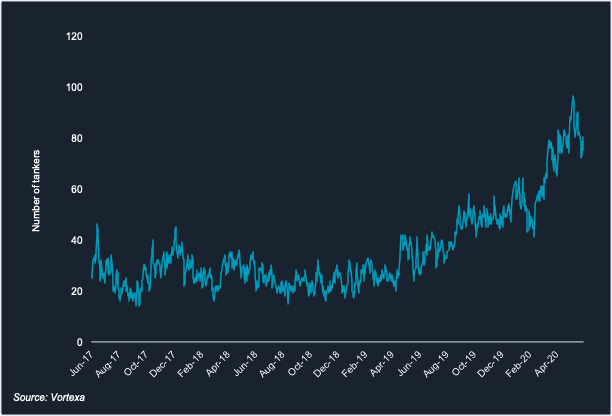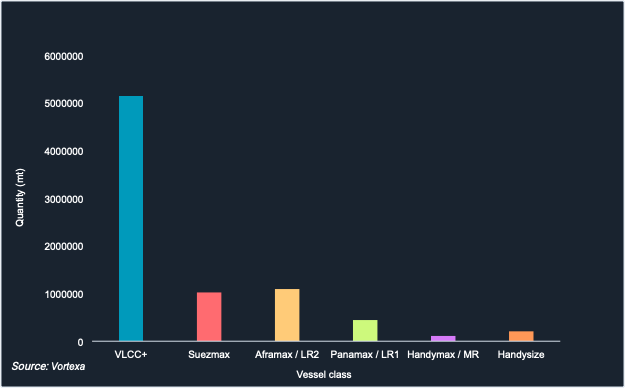Will fuel oil storage remain afloat?
Will fuel oil offshore storage remain afloat?
Fuel oil floating storage became a key feature of the global oil market even before the more recent pandemic-driven explosion in offshore crude and clean products inventories.
Preparation for the IMO 2020 regulations spurred traders and shipowners into building stocks last year – particularly off the Singapore/Malaysia hub – as future fuel oil spreads made the floating economics viable. We examine how these tankers have responded in a post-pandemic world.
The rise of fuel oil floating storage
- From 1 August 2019 to 31 December 2019 the number of tankers storing fuel oil offshore globally almost doubled to 59, according to Vortexa data, as the shipping industry readied itself for a switch towards more low sulphur fuel oil (LSFO) consumption.
- The number of tankers involved in fuel oil storage peaked at 96 in May 2020. But this has fallen to 77 as of June 17, 2020. This decline is a reflection of the reduced incentive, i.e. a softening in the contango for fuel oil, following the rebalancing of demand/supply fundamentals.

Number of tankers used in fuel oil floating storage
Fuel oil stocks
- Of the 77 tankers in fuel oil floating storage, 21 VLCCs hold in excess of 4.4mn mt, equivalent to around 60% of the total fuel oil observed stored on-the-water.
- All 21 VLCCs used for fuel oil floating storage are anchored in Asia, the majority in the Tanjung Pelepas STS zone. These VLCCs take in a range of products with varying sulphur levels to blend to on-spec 0.5% VLSFO. Low sulphur fuel oils, cycle oils, VGO and heavy-sweet crudes have been blended in this way for sale to the bunker market.
- The recent peak in the number of floating storage tankers indicates persistently weak fuel oil demand. However delays in scrubber installations will support LSFO consumption, whilst the seasonal peak for air-conditioning use in the Middle East will help lift HSFO demand.
- Going forward, we expect the downward trend in the number of tankers booked for fuel oil storage to continue, as global economic activity recovers from the lows driven by Covid 19.

Quantity of fuel oil in floating storage per vessel class (mt)
Interested in a more detailed view of our freight data and associated flows?
{{cta(‘bed45aa2-0068-4057-933e-3fac48417da3′,’justifycenter’)}}